




Jeff grew up spending weekends in the mountains, and when he’s not steering the ship that is the Catskill Center, can often be found atop a local peak. His column, Endnote, appears in each issue. Jeff is the Executive Director of the Catskill Center.

After a career in journalism, Allison joined the Catskill Center to tell stories in a different realm as the Communications Manager. She contributed multiple pieces to this issue and is one of the magazine’s editors.
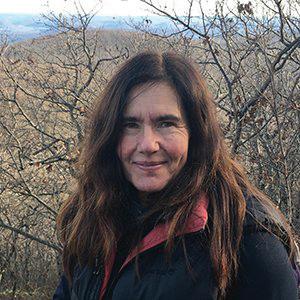
For this issue, Sarah handled the layout and graphic design work. Sarah is the Exhibit, Outreach and Marketing Coordinator for the Catskills Visitor Center.
Sarah is the CRISP Aquatic Invasive Species Manager and new to the Catskill Center team. She wrote about aquatic invasives for this issue.
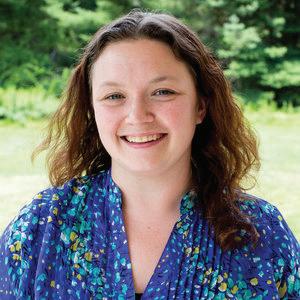
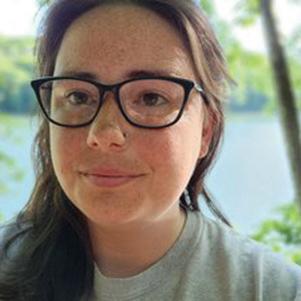
ABOUT US: Since 1969, the Catskill Center has protected and fostered the environmental, cultural, and economic well-being of the Catskill region. Our mission is to ensure a bright future for the Catskills by preserving our environment, expanding our economy, and celebrating our culture.
Become a member at: catskillcenter.org/membership 43355 Route 28, Arkville, NY 12406 | cccd@catskillcenter.org | 845.586.2611
Sarah joined the Catskill Center staff in 2022 but has been working in the Catskill Regional Invasive Species Partnership (CRISP) Partnerships for Regional Invasive Species Management (PRISM) since 2017. Shortly before graduating from SUNY Oneonta in 2017, she began working with the CRISP Watershed Steward Program and has helped to oversee and grow the program.
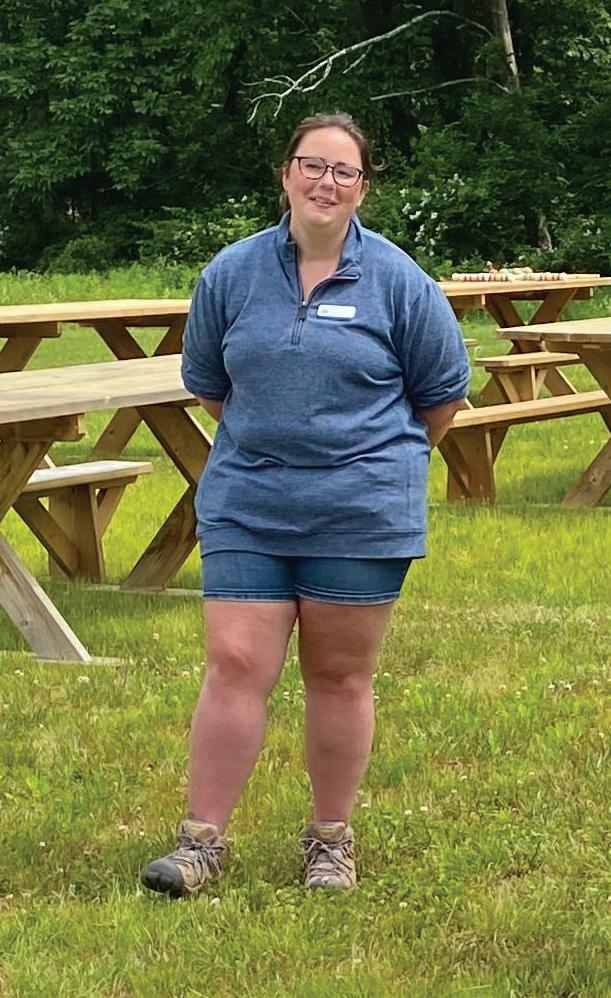
Sarah is passionate about aquatic ecosystems, helping to preserve them, and spends much of her summers above and below our NY waters. She has participated in several studies involving aquatic invasive species (AIS) and has done a lot of work with native pearly mussels. Her master’s thesis focused on the reintroduction of the American Eel and its effects on native pearly mussel populations.
Sarah is currently working to expand our knowledge of AIS in the Catskills Region. In 2020, Sarah was the first to find Quagga mussels in Otsego Lake, and she will be mapping their current spread in the Catskills over the next few seasons.
(
Read Sarah’s article about her work with aquatic invasives later in this issue.)
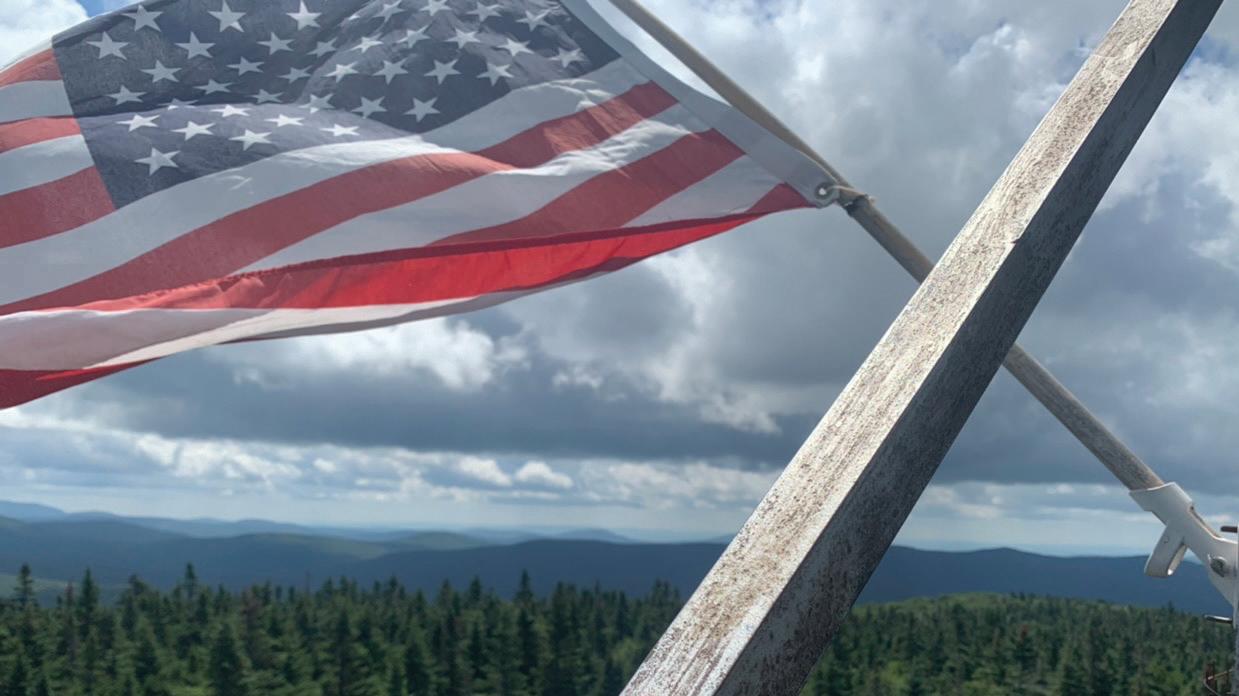
Olivia Bernard, Visitor Experience Coordinator at the Catskills Visitor Center, co-led a hike with Girl Gotta Hike’s Melissa Goodwin. These photos (thanks, Olivia!) depict the hike to the Balsam Lake Mountain Fire Tower on one of these super hot and humid days in August. Interested in participating in one of our guided hikes? Check out our upcoming events at catskillsvisitorcenter.org.
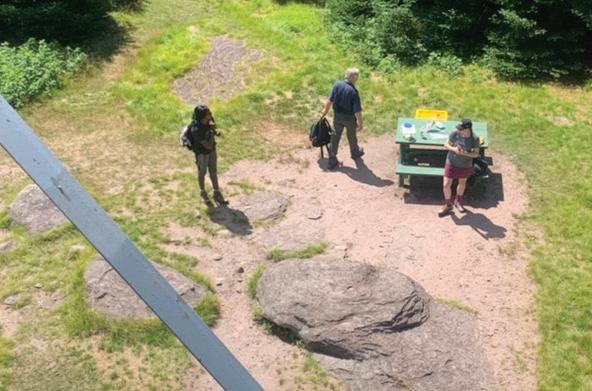
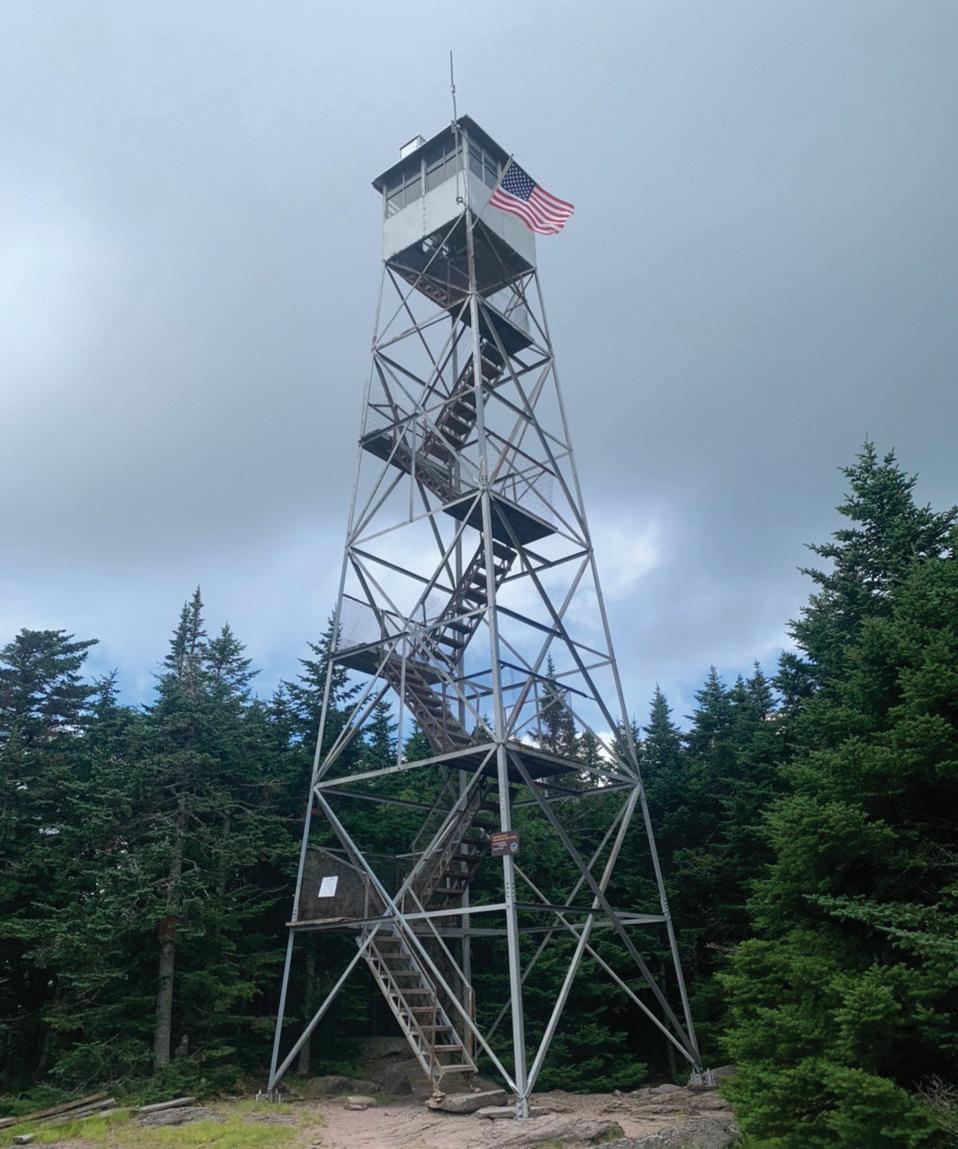



Maeve McCool is a visual artist based in Catskill, NY who creates intricate works celebrating the natural world around us, as well as critiquing and documenting abandoned structures left behind from decades of capitalism. McCool observes scenes in her everyday life that are often overlooked, but are integral to the cultural history of a place — like the decaying and forgotten hotels scattered throughout the Catskills, abandoned businesses, and crumbling farm houses. Despite the ebb and flow of the man-made world, one thing

is constant — in the end, the forces of nature will always take back what we have built, something that has always fascinated McCool.
McCool grew up in Wilmington, DE, and studied Fine Art and Art History at the Corcoran College of Art in Washington, DC, before moving to Catskill in 2018 as a Research Fellow at the Thomas Cole National Historic Site. McCool was influenced by Thomas Cole’s major series "Course of Empire", which studies how human greed and production affect the environment, driven by his overwhelming love of the nature that surrounded him in the Catskill Mountains.
McCool had a solo exhibition showcasing her drawings and paintings at Jeff Tufano Gallery in Cobleskill, NY and built a shelter/fort installation made from found trash in the group exhibition an/aesthetics: Rosekill in Rosendale, NY, which is currently on display. For more information about upcoming exhibitions, workshops, commissions or available prints, visit maevemccool.com.
Look for more of Maeve’s beautiful work throughout this issue.
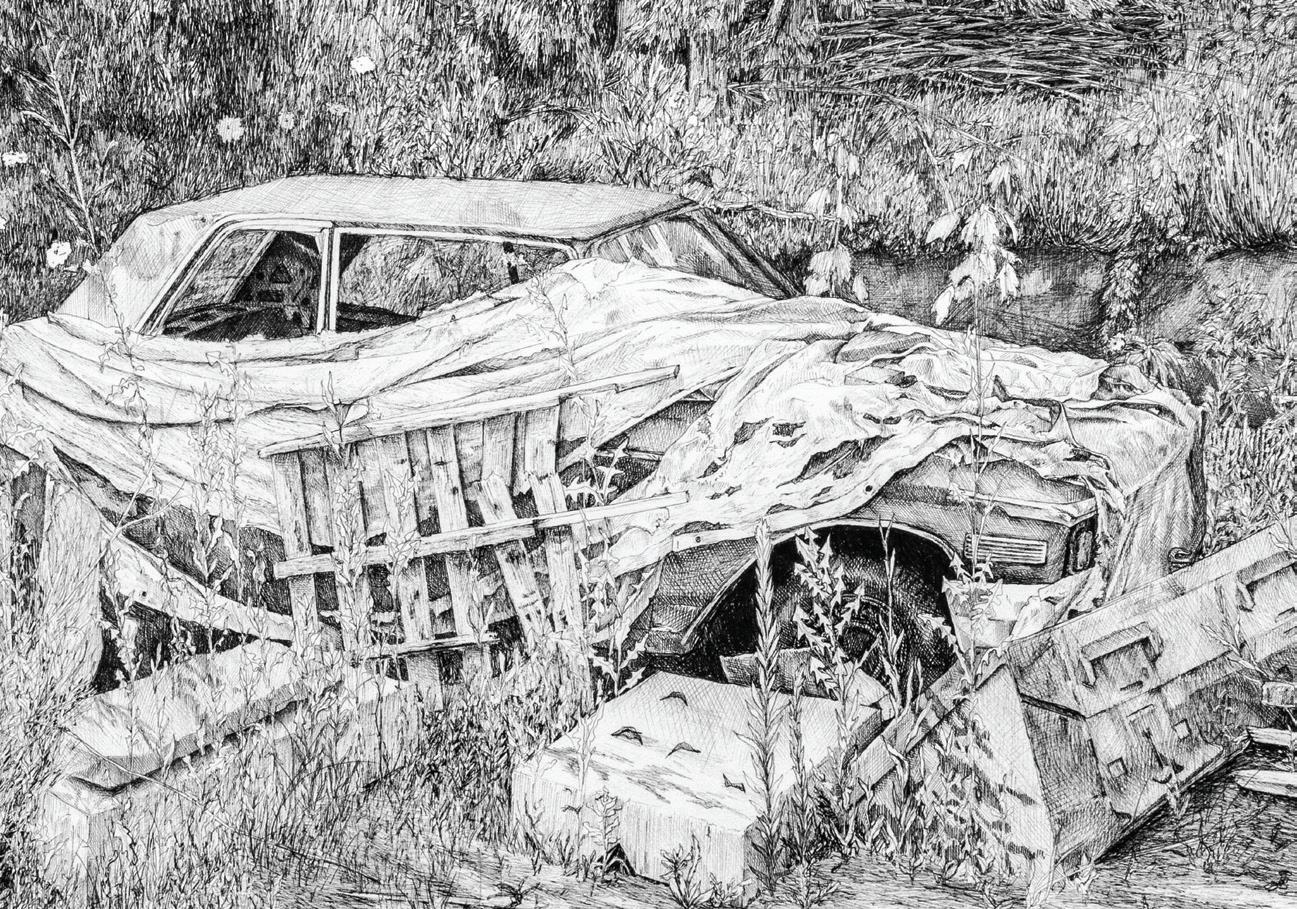 SUN-BLEACHED TARP BY MAEVE MCCOOL, INK ON PAPER, 22X30 IN,2022. PHOTOGRAPH COURTESY OF BETH SCHNECK PHOTOGRAPHY.
SUN-BLEACHED TARP BY MAEVE MCCOOL, INK ON PAPER, 22X30 IN,2022. PHOTOGRAPH COURTESY OF BETH SCHNECK PHOTOGRAPHY.
During the 1970s, in various areas across the five counties of the Catskill Mountains (Delaware, Greene, Sullivan, Schoharie, and Ulster), quilters were gathered around quilting frames. Surrounded by what felt like an extended family sharing joys and sorrows, encouragement, enrichment, strength, and mutual respect, many friendships blossomed. Although the quilters were from diverse backgrounds, the Catskill Mountains (home of over 700,000 acres of the Catskill Park and Catskill Forest Preserve) provided an underlying influence along cultural, economic, and environmental lines. Plus, community outreach was a consistent focus of the groups.

Their first quilt show was held in 1980 at the Erpf Catskill Cultural Center in Arkville, NY. Two years later, the Catskill Mountain Quilters Hall of Fame (CMQHOF) was founded. The goal was to recognize some of the women for contributing to and keeping alive the art of quilting, as well as preserving the spirit of caring and sharing. In fact, candidates had to demonstrate their dedication to the art of quilt making, skill in design techniques, quality control, and workmanship, along with how they share their art and care for others. In October of 1982 at the Erpf Catskill Cultural Center, six quilt makers were the first inductees into the CMQHOF.
Nominees are restricted to those residing in the five-county area at the time of induction. Quilt guilds across the counties may have Guild Membership in the CMQHOF, enabling all their guild members to participate in meetings and the biennial quilt show, and to nominate inductees. Part of each guild’s activities include charity projects that help meet their county’s needs.
After 1998, the annual induction ceremonies became biennial and now occur in odd years. To date, there have been 94 inductees. Inductee plaques including a portrait photo, brief bio, and small quilt sample, and are on display in the Community Room of the Catskill Center in Arkville (the Erpf Center). A member guild, Catskill Mountain Quilters, still meets at the Catskill Center – they continue the practice of having a quilt in a frame that lowers from the ceiling for hand quilting bees. The Erpf gallery has hosted several one-woman quilt shows to honor inductees. The CMQHOF holds spring and fall meetings at the Catskill Center, with its annual Summer Picnic at CD Lane Park, Maplecrest. We are very thankful for the support of the Catskill Center.
Forty years after the formation of the CMQHOF, the world of quilting has changed significantly. With new tools to help speed up the process and improve accuracy, additional skill sets have been introduced, resulting in a variety of non-traditional pieces. With online tutorials, worldwide virtual quilt groups, national and international shows, etc., one can teach, learn, and become part of many communities. Virtual platforms like Zoom ™ have kept some member guilds going during the pandemic. Now that in-person meetings have restarted, the most meaningful and heartwarming comments that have
been heard indicate that everyone has missed the in-person camaraderie, where sharing and caring is best communicated. This brings us full circle to our founding members and a strong circle of friends.
The quilt shown throughout this article is Cottage Garden by Judy Craddock. It is an original design, and the techniques used were needleturn applique, trapunto, ribbon embroidery, embroidery embellishments, Broderie Perse, and also Inktense pencils. The entire 48”-square design was hand quilted, and was accepted into AQS Paducah (2022) and AQS Grand Rapids (2022).

There has been a rebirth of a 1755 farm. Ten years ago, Kiley Thompson bought the run-down farm, now called Lazy Day Farm, and began the long road to fulfill his dream of owning a working farm as well as fulfilling a promise.
The buildings were so dilapidated that his realtor did not even want to show him the property. He insisted and it was love at first sight. Today, there is a nursery full of rare and exotic blooms and vegetables. The flower nursery features hanging baskets, containers, and a "Bloom Boutique Bar," where one may gather a bouquet from freshly cut flowers.
The farm is known for its colorful Americana eggs and especially guinea hen eggs. The little white garage has been transformed into a farm store offering unusual vegetables, syrup, jams, jellies, BBQ sauce and Dilly Beans.

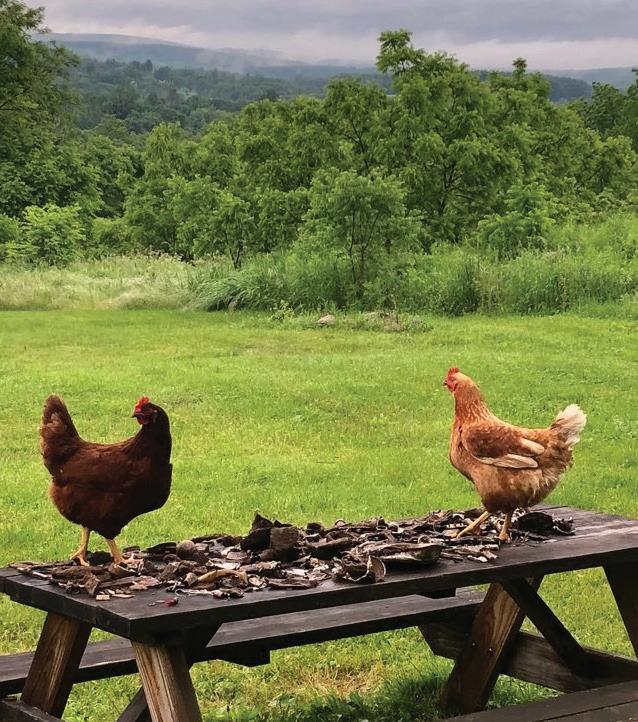
 PHOTOS COURTESY OF LAZY DAY FARM AND ANNE MACPHERSON
PHOTOS COURTESY OF LAZY DAY FARM AND ANNE MACPHERSON
Thompson loves to tell the story of the farm. "In the 1700s, the Reed Farm was very remote. Mohawk were everywhere. The Catskill Creek provided limited transportation to the Hudson River. Winters were harsh and carving out a living almost impossible," says Thompson. He says that before the Revolutionary War, most of the Northern Catskills were part of Albany County. The territory where the farm was started was a district called Coxsackie, a Dutch translation of Algonquin meaning, ‘Land of Owls.’
In 1790, the land was relieved from the town of Coxsackie to form the town of Durham, established in 1802. As local lore goes, the original founders of the town settled on Meeting House Hill (across from the farm) at a high elevation to see marauding Mohawks before they could attack. However, the wind and the cold were so brutal that half the settlers died and the remaining either returned to Boston or stayed on to form the town of Durham.
One of the families that stayed was the Hull family. Around 1802, a member of the Hull family married a daughter of the Reed family. The farm became known as the Reed-Hull Farm. It eventually became the Hull Farm. An extension was built in 1820 and a massive new barn was built for the increasing dairy herd. The farm eventually became known as "Pa John’s" and became an anchor for the growing community.
One of John Hull’s 14 children was Ralph Hull, who along with his family sold the farm to Thompson (only the second owner) in 2011 under the promise that Thompson would bring the farm back to its glory. Hull died a few years later, but Thompson kept his promise. Lazy Day Farm was incorporated as a business in 2021. The 1755 farm may be one of the oldest farms in Greene County.
Part of the glory of Lazy Day Farm are Anne Macpherson’s rare blooms.

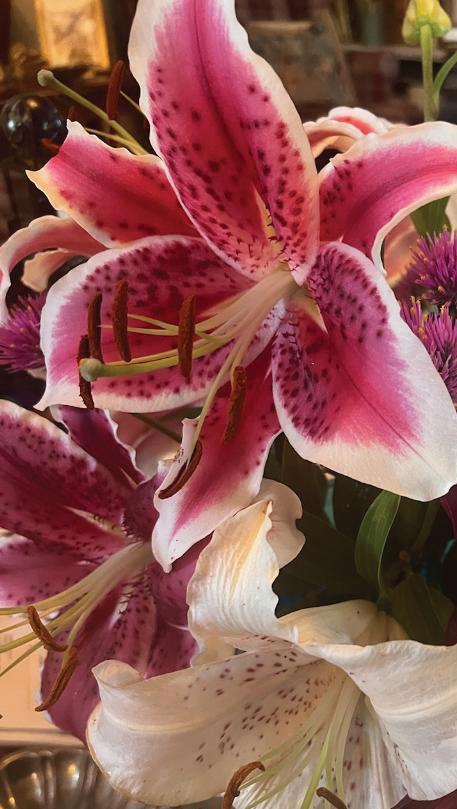

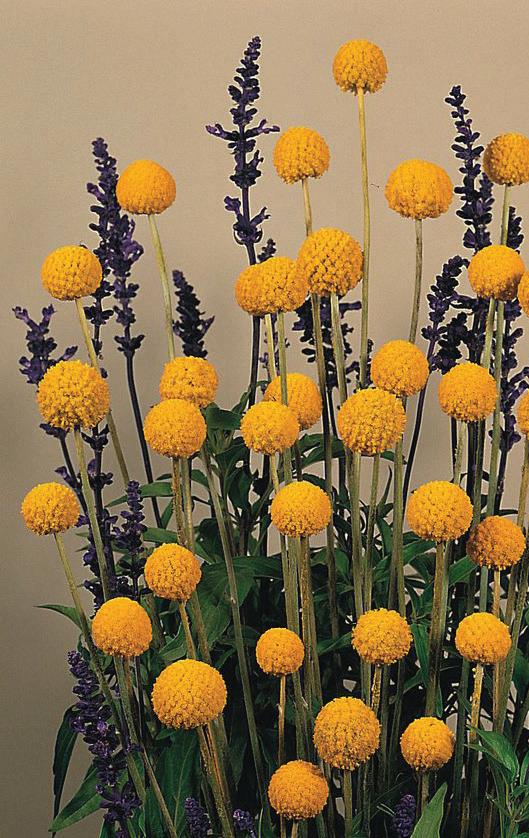
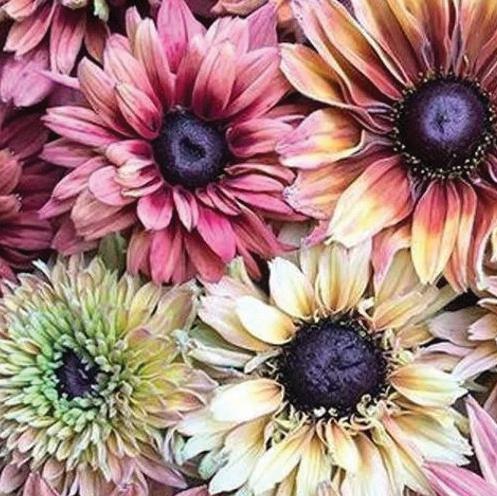

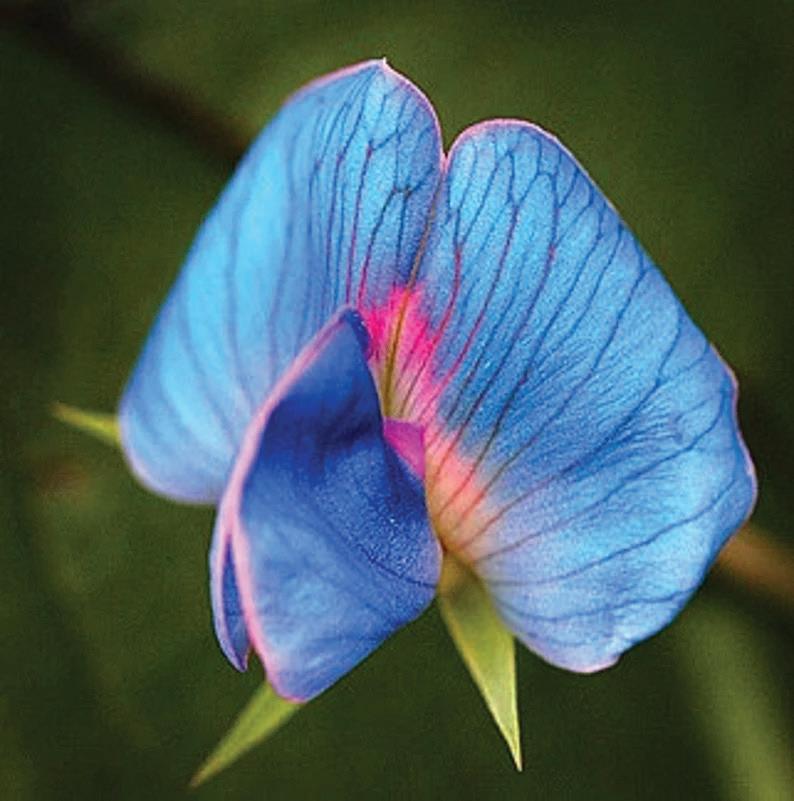 PHOTOS COURTESY OF ANNE MACPHERSON
PHOTOS COURTESY OF ANNE MACPHERSON
I have been gardening since I was five years old. I am also an artist. I love flowers, especially if they are unusual. When Kiley Thompson and I decided we would open a rare floral nursery, my first thought was to raise only those blooms that could not be found anywhere in Greene County and possibly beyond. In the late fall of 2021, I began my search for flowers that would not only be beautiful and unique, but also grow in our climate. I pored through seed catalogs and searched Etsy for plants that would delight the senses. By the time January rolled around, seeds had been ordered and the grow room was glowing with light. I carefully placed tiny seeds of what I hoped would be my dream garden and prayed.
The plants grew, at least most of them, through the cold months of winter while I impatiently awaited the warm days of spring. As each seedling grew, I could imagine what it would look like when it was in full bloom. Not only did I want a magic garden of brilliant colors, I came up with the idea of a Bloom Bar Boutique where customers could put their own bouquets together, stem by stem. I referred to the color wheel to plant complementary blossoms and opposites. I used my artistic eye as my guide. Some of my favorite flowers either featured spectacular combinations of flowers or unique shapes. I loved the lacy look of Queen Anne’s Lace and found several in wonderful colors — red, mahogany, green and black. Wow!
One of my passions is sunflowers. Not any old yellow sunflower but ones with multicolor petals or rich brilliant color that was out of the norm. One of those sunflowers has a deep blue center with eight different colored petals. Another was white with a black center. My favorite of all the sunflowers however is Autumn Glory, with the glowing colors of the fall, from burgundy to deep red and orange.
As the garden comes into bloom, I see my dream is becoming a reality.
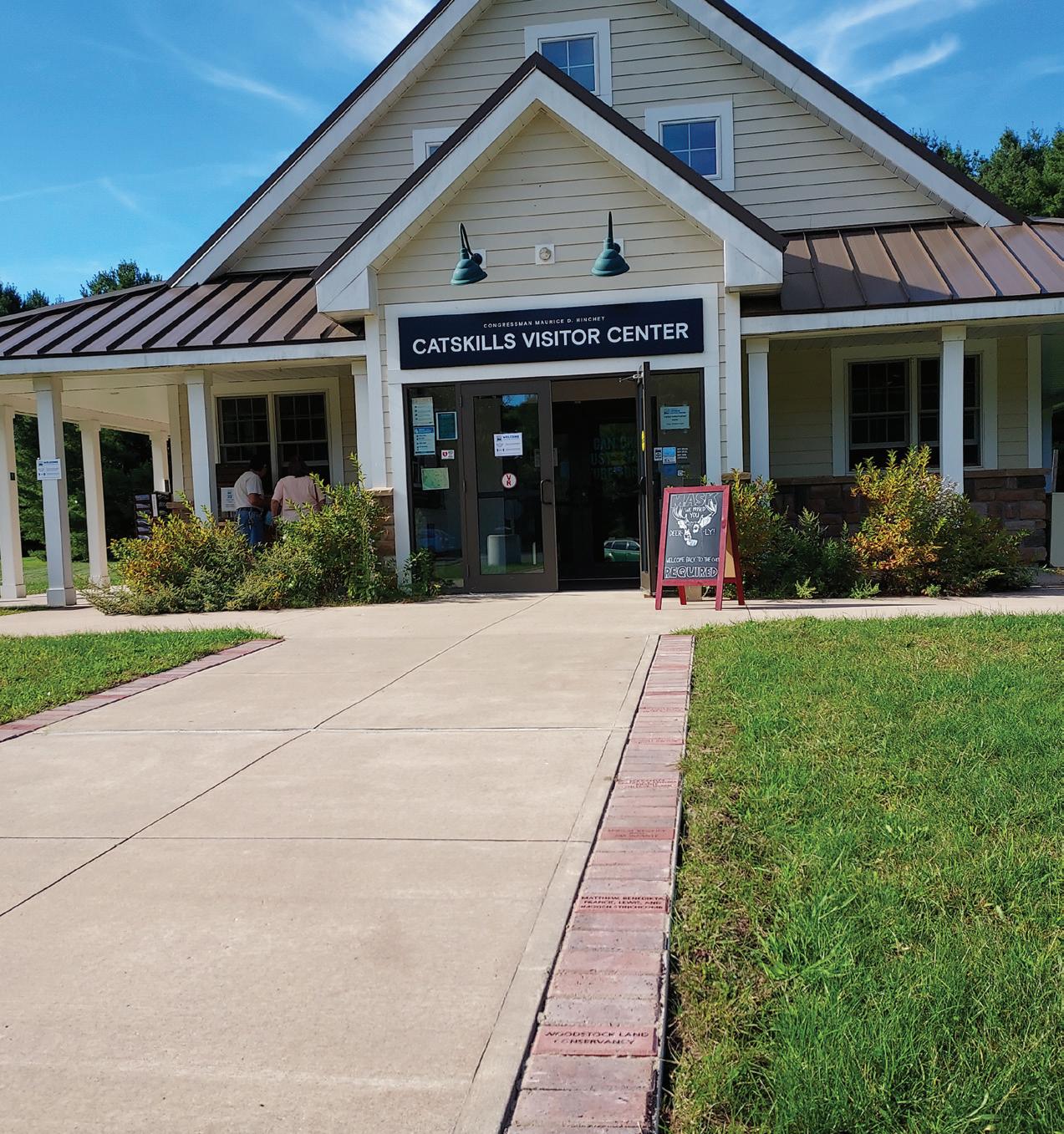
The staff of the Congressmen Maurice D. Hinchey Catskills Visitor Center has begun lining the front walkway with bricks sponsored by local donors, businesses, and organizations, engraved with customized messages that honor the people, traditions, and rich history of the Catskills. A limited number of 4x8” and 8x8” bricks are still available - see details on the following page. Brick sponsorships are greatly appreciated to help support the Catskill Center in maintaining and operating the Catskills Visitor Center.

We would like to recognize these businesses for their generosity. When you do business with them, you support the Catskill Center and the entire region.
SPORTS PARKS PROJECT BUSINESS FRIENDS ($500+)
THE EMERSON RESORT AND SPA HUNTER FOUNDATION INC.
THE ROXBURY
KVISTAD FOUNDATION/WOODSTOCK CHIMES FUND BOVINA CENTER MONTESSORI SCHOOL LAMONT ENGINEERS, PC OTTO & FRIENDS
EASTERN MOUNTAIN SPORTS
SLUITER AGENCY, INC.
LVDV OPERATIONS, INC.
PHOENICIA BUSINESS ASSOCIATION
RAIL EXPLORERS PHOENICIA
THE OLANA PARTNERSHIP
SILVER HOLLOW AUDIO
CAMP CATSKILL
RED SQUARE DESIGN
KAATERSKILL MARKET
EMPIRE STATE TRAIL RENTALS
TROUT UNLIMITED ASOKAN-PEPACTON
WATERSHED CHAPTER
SHAWANGUNK VALLEY CONSERVANCY
more information visit
THE NEVERSINK ASSOCIATION
SAFECO ALARM SYSTEMS, INC.
FAIR STREET REFORMED CHURCH
ERICKSON’S AUTOMOTIVE, INC.
PEEKAMOOSE RESTAURANT
PINE HILL TRAILWAYS
TENDER LAND HOME
VLY MOUNTAIN SPRING WATER, INC.
PHOENICIA LODGE
STORY FARMS LLC
STEWARD SAND AND GRAVEL
HARMONY HILL LODGING & RETREAT CENTER
COLDWELL BANKER TIMBERLAND PROPERTIES
MORGAN OUTDOORS
org/businessmembership
Individual ($35) Dual / Family ($50) Senior/Student ($25)
BENEFITS INCLUDE:
SUBSCRIPTION to the Catskill Center’s quarterly Catskills magazine with news from the Catskill Center and across the Catskill Region.
10% DISCOUNT on purchases at the Catskills Visitor Center, all Catskill Center facilities, and Campmor in Paramus, NJ with presentation of member card.
MEMBER-ONLY INVITATIONS to the Annual Gathering, lectures, and special events.
ACCESS TO THE CATSKILL CENTER ARCHIVES at the Erpf Center in Arkville. Please contact the Catskill Center to schedule an appointment.
MEMBER PACKAGE Members receive a membership package in the mail, including a member card and a Catskill Center cling sticker.
ecosystems
communities throughout
New this year, the Catskill Center has employed staff dedicated solely to Aquatic Invasive Species (AIS). Sarah Coney is CRISP Aquatic Invasive Species Manager and writes about why it’s important to prevent AIS from invading Catskills (really, any) waters.
The Catskills are home to many natural wonders, from the scenic views of Giant’s Ledge to the cascading force of Kaaterskill Falls. A variety of natural resources can be found in the Catskills and among the most precious are our waters. The Catskills have sparkling lakes (including many of New
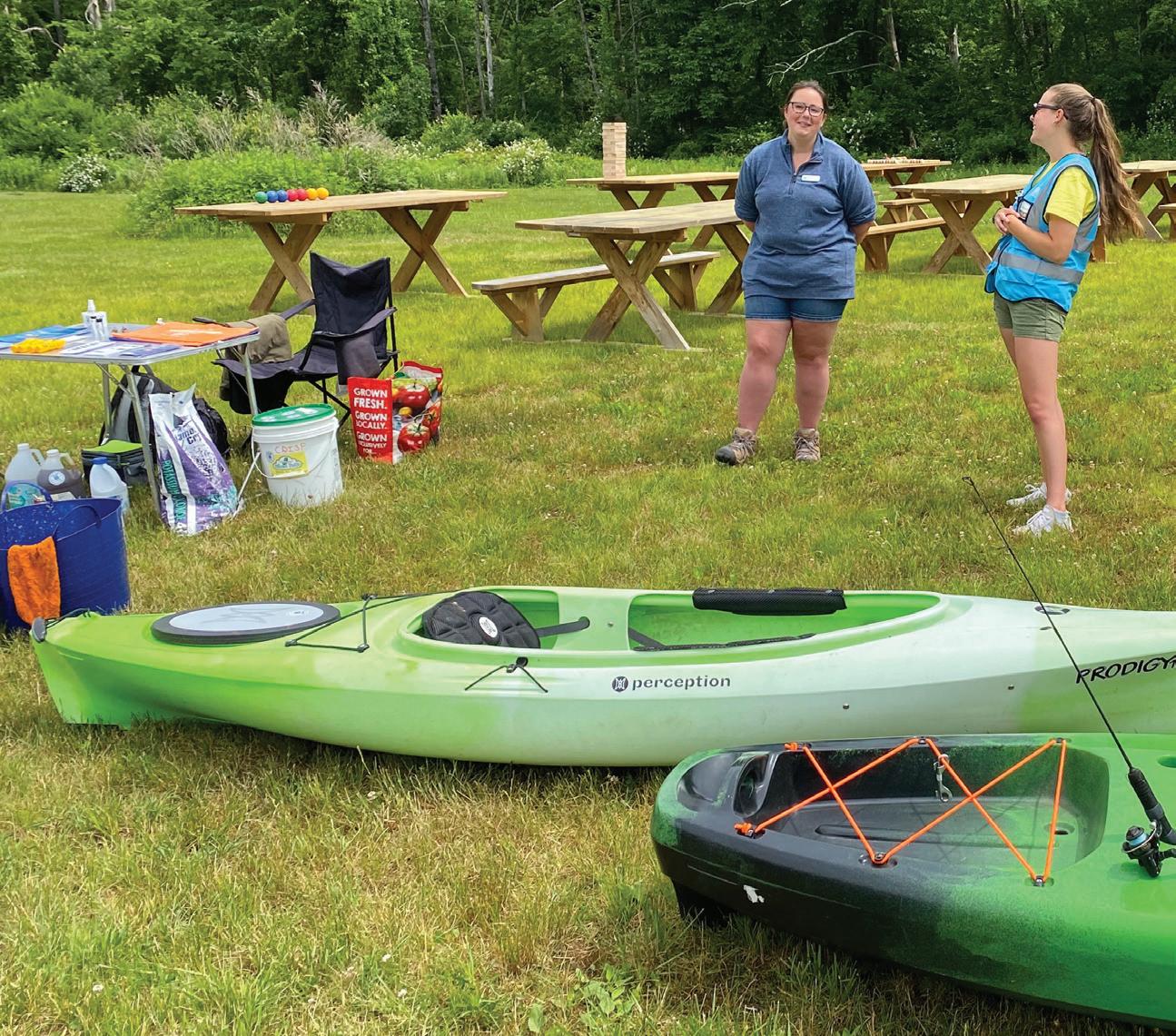
York City’s reservoirs), stunning waterfalls, and miles of rivers and streams comprising parts of the Delaware, Susquehanna, and Hudson watersheds. Many of us have a favorite lake, river, or pond where we spend the summer boating, fishing, or swimming. Many of these waterways we simply appreciate for their aesthetics, adding picturesque beauty to our daily lives. While many people appreciate and recreate in the mountains and forests of the Catskills, our water bodies are second to none and deserve just as much admiration and protection.
Like many places in the world, our waterways face the everencroaching threat of Aquatic Invasive Species (AIS). AIS are non-native plants and animals that cause environmental or economic damage or are harmful to human health. AIS have been introduced both accidentally and purposefully to North America through a multitude of ways: ballast water, horticulture, as a food resource, to name a few. Many aquatic invasive species tend to reproduce quickly and establish populations rapidly
and have few to no controlling herbivores or predators in the native ecosystem. These introduced species will then compete with native species for resources, often outcompeting the native species. Invasive species lead to declines in biodiversity, alter habitats, and can even eradicate native populations in areas where they are introduced.
Not only do they have profound effects on the ecosystem, but they can take a toll on our wallets. Invasive species cost North America an estimated $26 billion per year since 2010 (CrystalOrnela, R. et al. 2021). While there are no studies highlighting the cost of invasive species in the Catskills specifically, anyone who has ever had to deal with zebra mussels (Dreissena polymorpha) clogging their water intakes or Eurasian watermilfoil (Myriophyllum spicatum) tangling their boat props can attest to how costly these invaders can be. Invasive plants and animal species can negatively impact populations of game fish or degrade the habitat of waterfowl, impacting fishing
and hunting opportunities in the Catskills as well.
Despite the prevalence of AIS in the Catskills and surrounding areas, there are still many uninvaded waterbodies, such as Mongaup Pond in Livingston Manor, Sullivan County, or the NYC reservoirs that we need to protect. There are also many species of AIS not found in the Catskills that if introduced could do irreparable damage to our waterbodies. It’s up to those who use and appreciate our Catskill water resources to help protect them not only for ourselves but for future generations as well.
The more people are aware of AIS like Northern snakehead (Channa argus), Hydrilla (Hydrilla verticillata), spiny waterflea (Bythotrephes longimanus), and other AIS, the better prepared we are to stop their spread. The best thing a boater, angler, or general recreationist in the Catskills can do is CLEAN, DRAIN, DRY!
CLEAN off all visible debris such as aquatic plants, mud, sticks, etc. from watercraft or equipment when leaving a launch. It’s
important to be thorough and make sure to check every nook and cranny where debris might be lodged.
DRAIN any standing water in the hull, the motor, or anywhere else water accumulates. Many new wake boats have internal bags that take in water and are great ways for AIS to move around undetected.
DRY your watercraft or equipment completely before moving to a new waterbody. Five full days of sun (no rain!) are best or at least two weeks out of the water. Many species of invasive invertebrates can persist in damp habitats for much longer than we think, so a good drying is vital.
When visiting multiple waterbodies, it’s important to realize that motorboats, canoes, kayaks, paddle boards, and any equipment in the water are capable of transporting AIS.
From the distinctly spined water chestnuts (Trapa natans) that tend to get caught up between boat and trailer to microscopic quagga mussel (Dreissena rostriformis bugensis) larvae
persisting in a bit of water in a kayak’s hull to tiny, transparent fishhook waterflea (Cercopagis pengoi) caught up in an angler’s reel, we move AIS around in a multitude of ways without even being aware. It’s up to us to take every reasonable precaution when leaving or entering a waterbody to stop the spread of AIS.
Luckily, NYS boaters have help in the form of the NYS Department of Environmental Conservation’s boat stewards stationed at launches around the state to help boaters and recreationists Clean, Drain, and Dry their boats and equipment prior to entering or leaving the launch. However, our friendly neighborhood stewards can’t be at every launch in the state 24/7 and it’s up to boaters and other recreationists to take responsibility to help prevent the spread of AIS in the Catskills.
Help us keep the Catskills beautiful by being aware of AIS in the region and doing what you can do to stop them. For more information, visit catskillinvasives.com and remember to always CLEAN, DRAIN, DRY!
Citation: Crystal-Ornelas R., E.J. Hudgins, R.N. Cuthbert, et al. 2021. Economic costs of biological invasions within North America. NeoBiota 67:485-510
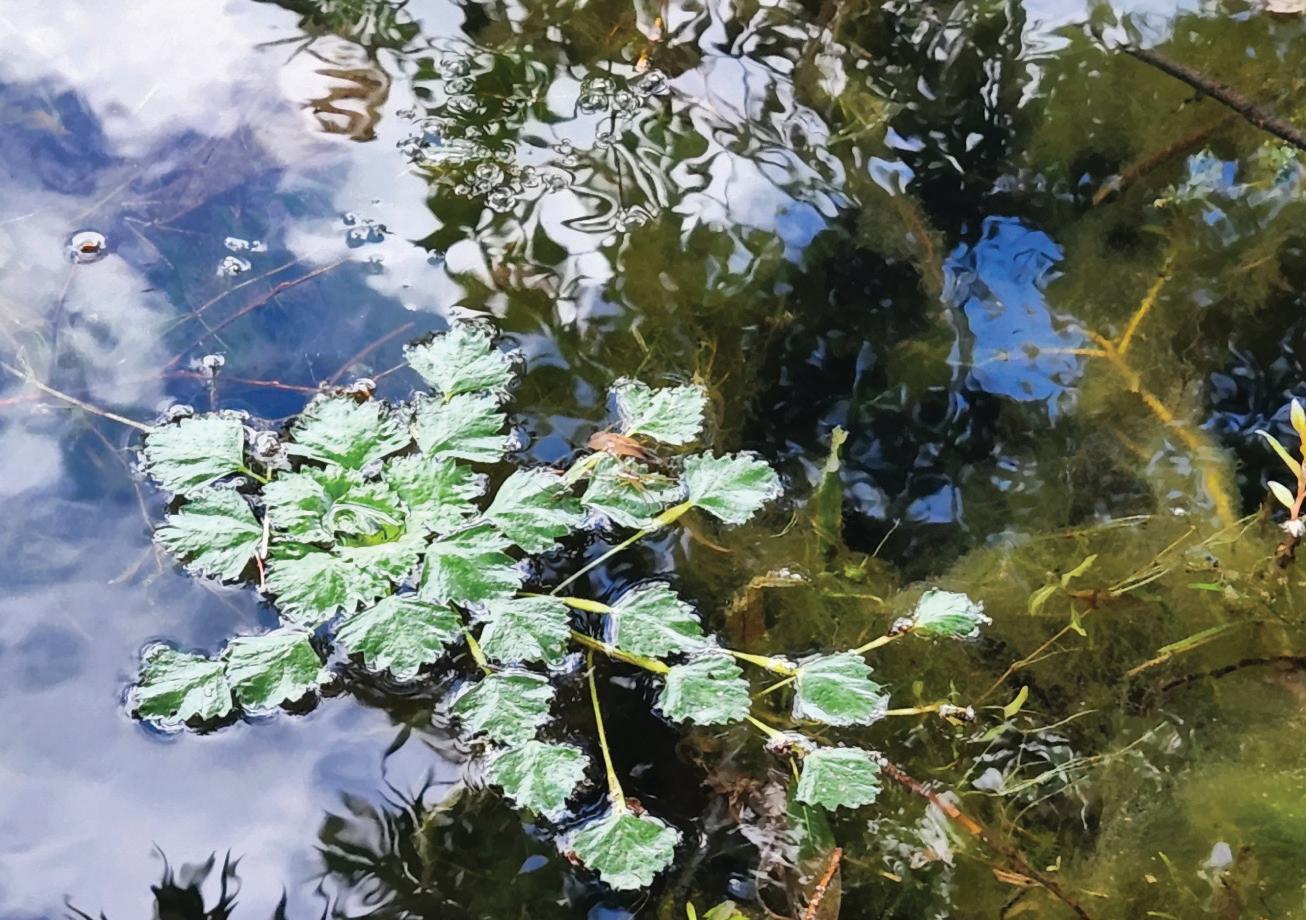

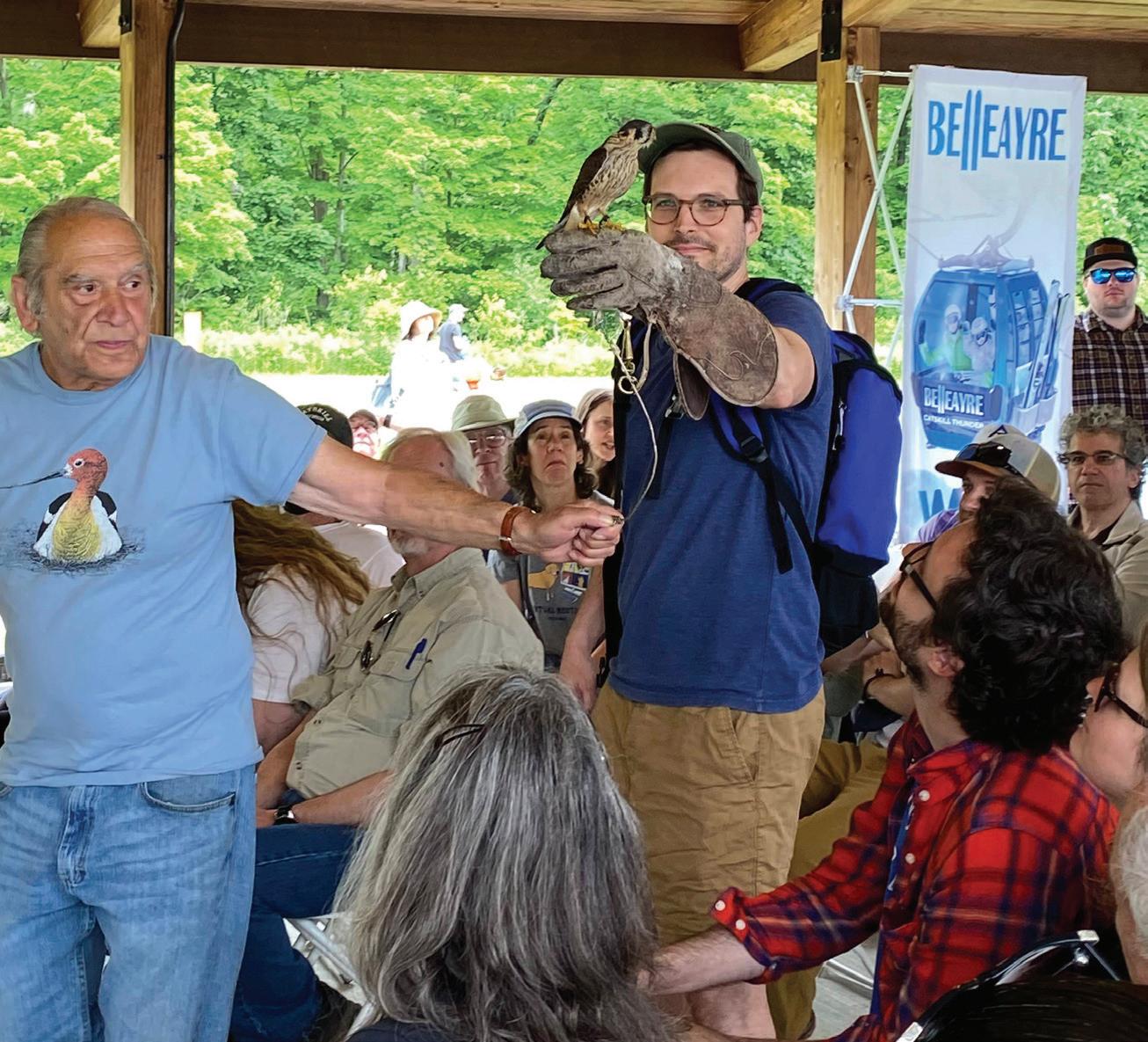
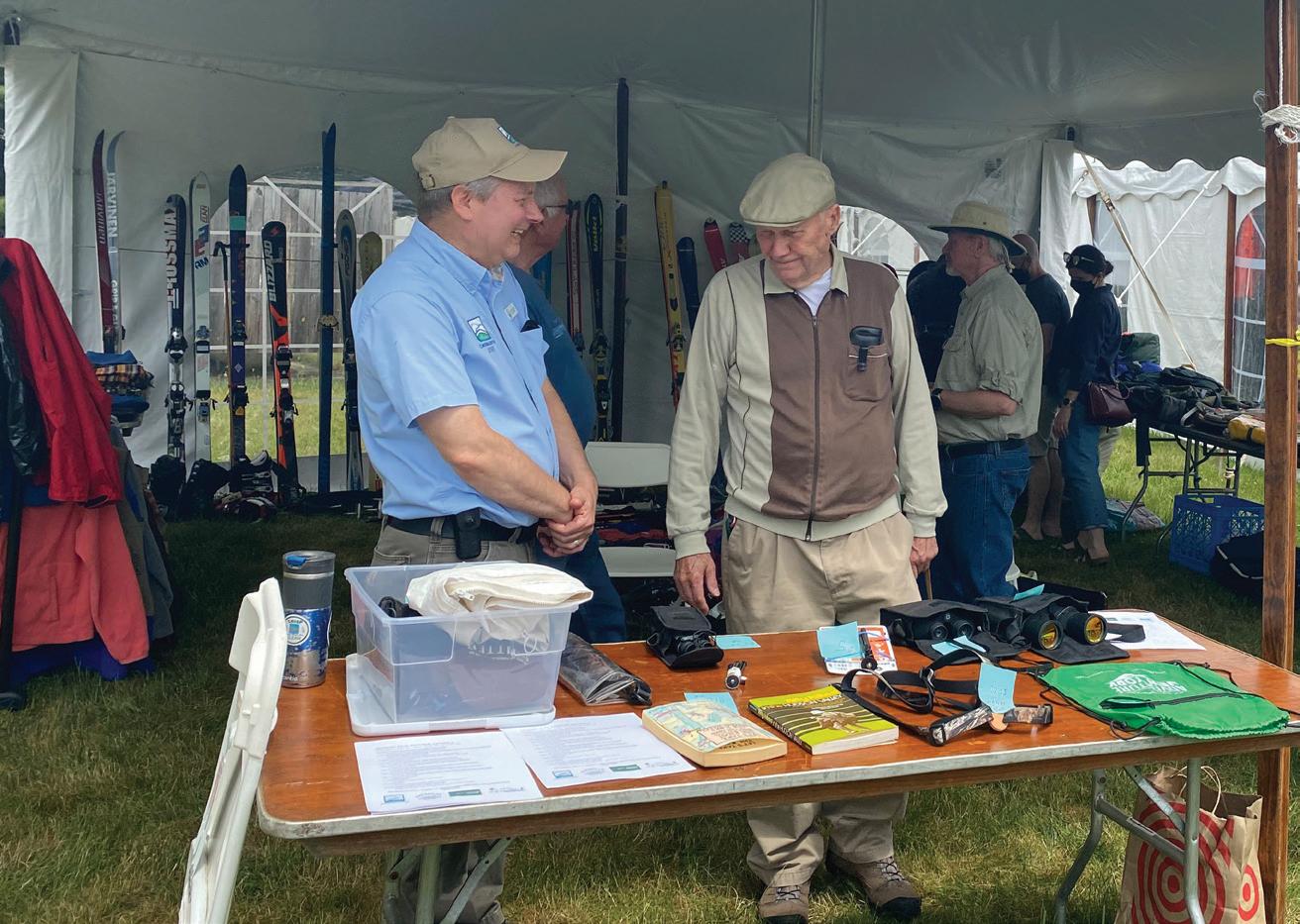
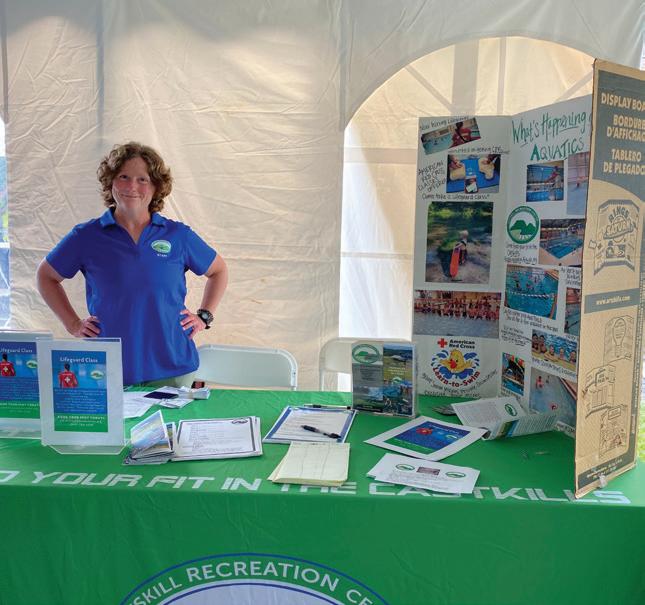
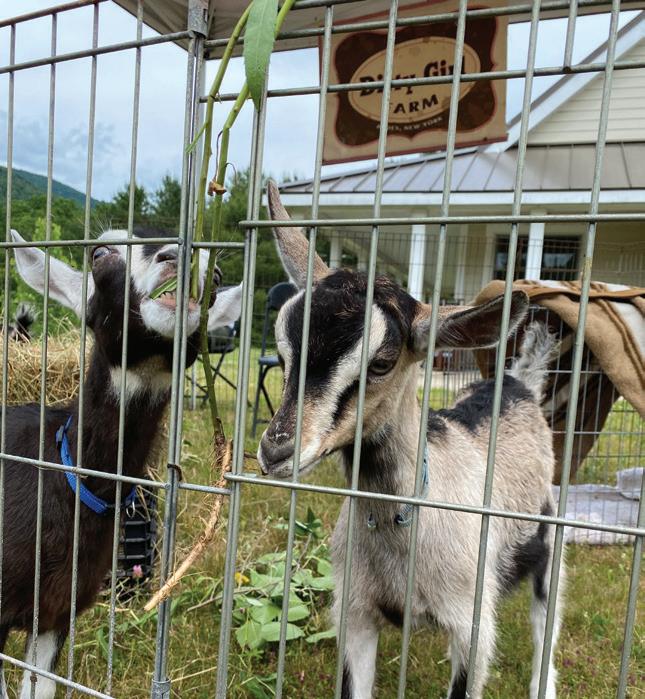

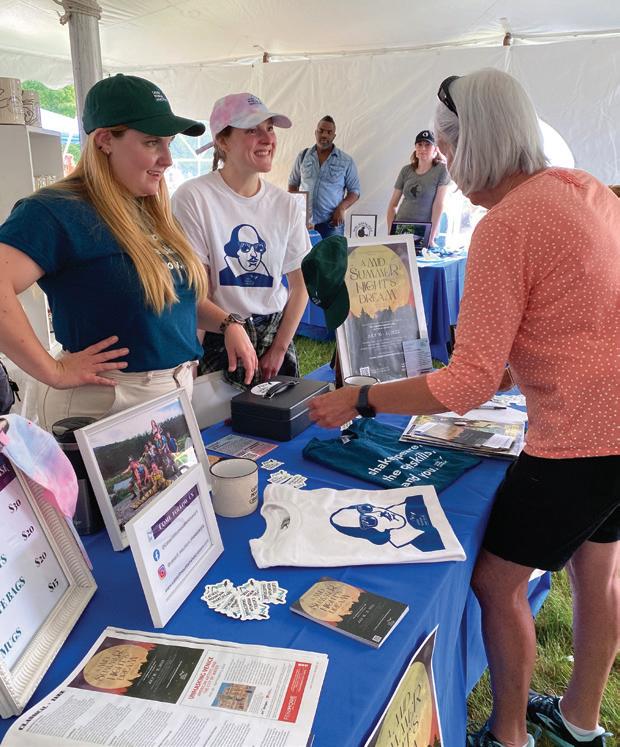

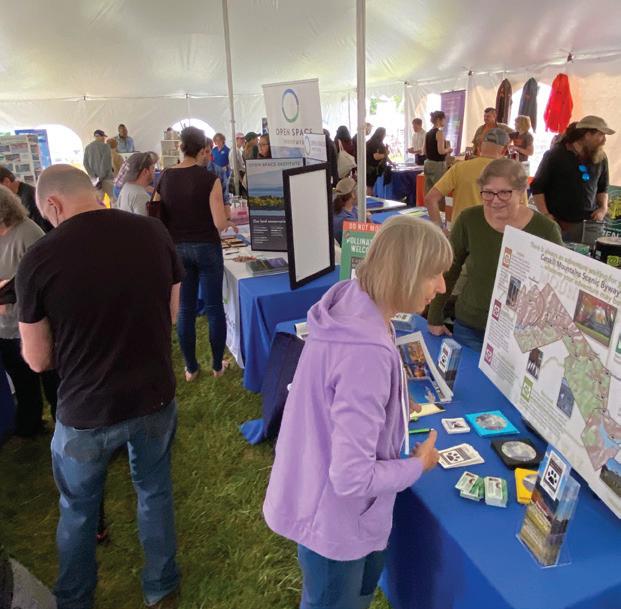
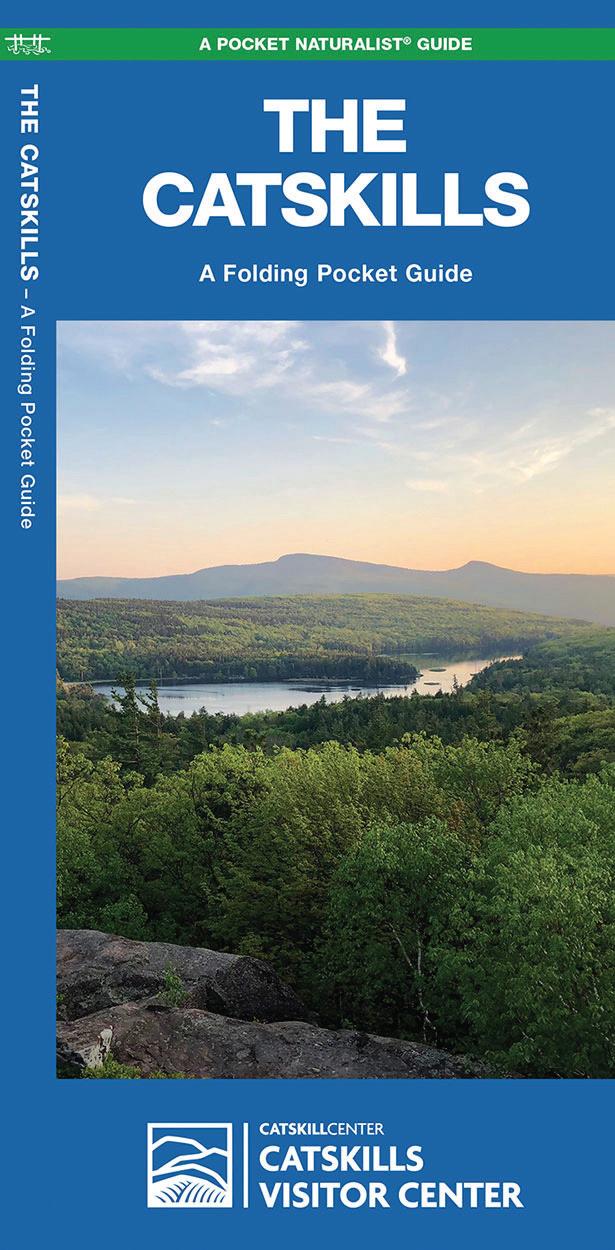
You’ll find answers to all these questions and more in this compact guide. Created to meet a need identified by the staff and volunteers at the Catskills Visitor Center, this one-of-a-kind guide is waterproof, lightweight, and an excellent resource for both visitors and residents. Easily tucks in a jacket or backpack pocket, tackle box, or glove compartment, and makes a great gift. Explorers of all ages and experience levels will appreciate the outdoor recreation tips, regional information, and full-color illustrations for identifying local plants and wildlife. Retails for $7.95. To order, visit catskillsvisitorcenter.org.


There’s a lot that goes on behind the scenes at the Catskill Center, especially the collaborative approaches and advocacy that we work on across the Catskills. That work has picked up steam in the last several months as we have been involved in many opportunities to help shape the future of the Catskill Park, the Catskill watershed, and our State. It’s often quietly intensive, technical, yet important work, and it is key to why the Catskill Center succeeds in our efforts to protect and foster the environmental, economic, and cultural well-being of the Catskills.
For the Catskill Park, I have been serving on the Catskill Strategic Planning Advisory Group (CAG) for over two years and, in that time, we have been studying why the Catskill Park has become a more popular destination, the positive and negative impacts of increasing use, and how it can be managed into the future to protect our critical natural resources, provide recreational opportunities for the public, and benefit our local communities. That’s a mighty tall order, and it is why the group, appointed by the New York State Department of Environmental Conservation (NYSDEC) Commissioner on behalf of the Governor, has been working for so long on the creation of a final report. That final report will be released shortly, and it will contain a number of important recommendations that will help New York State recognize the Catskill Park as a park that should be managed and resourced in a comprehensive way, akin to a state- or federally-managed park. The appointment last year of a Catskill Park Coordinator was one of the first recommendations of the CAG in its Interim Report, and that Coordinator, who

has been serving in this capacity this year, will be key to the implementation and success of the CAG’s Final Report. The Catskill Center and I have invested a considerable amount of time into this effort and we’re proud of the collaborative approach the entire CAG took to understanding the challenges, examining opportunities, learning from other areas, and finally putting together a series of recommendations that will help the Catskill Park thrive in the future.
In the 2,000 square mile New York City West-of-Hudson watershed, which provides clean drinking water for millions of New Yorkers, our efforts span decades. The Catskill Center is one of the signatories to the 1997 Memorandum of Agreement (MOA), which has guided the protection of the watershed and its communities, and created a framework for the stakeholders and signatories to work together to ensure clean water and community vitality. That’s a constantly evolving effort and the Catskill Center has been working diligently on it for all those years. Most recently, we provided feedback to the NYS Department of Health on its draft requirements for protecting water quality in the Catskills (the Filtration Avoidance Determination or FAD). In that letter we call for the immediate expansion of our Streamside Acquisition Program (SAP) that protects riparian buffers in the watershed, affords more flexibility for local communities, and relies upon science-driven decision-making to ensure that water quality protection measures succeed without unduly impairing local communities. In addition to comment letters, the work involves negotiations, collaborations, advocacy, and more. Over the years, the Catskill Center has worked diligently to represent both environmental and community concerns, and bring a balanced approach to our work with all stakeholders in the watershed.
In addition, we just finished our review of the Climate Action Council’s robust plan to implement New York State’s 2019 Climate Act. The Climate Act calls for ambitious reductions in climate-changing emissions, and the draft "scoping plan" provides a framework for how the state can actually reach those ambitious targets. In our comment letter, we applaud the Council for proposing strong action to combat climate change, and provide some practical recommendations aimed at increasing the plan’s likelihood of
success. The Catskills’ abundant forests are crucial for sequestering carbon. Smart planning that ensures both healthy forests and healthy communities has been a longstanding goal of the Catskill Center, and our comment letter reinforces that core principle.

This quiet, strategic work of collaboration and advocacy, at the community level, the state level, and beyond to national and international levels is vital to the long-term protection of what we value most in the Catskills. As recent U.S. Supreme Court decisions make clear, we must build up from the grassroots, from each place we hold dear, efforts to not only improve those places, but knit together those efforts to create a groundswell of support to force policymakers and legislators to do what is necessary to protect the Catskills, protect New York, protect our nation, and protect this world.
JEFF SENTERMAN Catskill Center Executive DirectorA periodical celebrating New York State’s glorious Catskills, delivered directly to Catskill Center members.